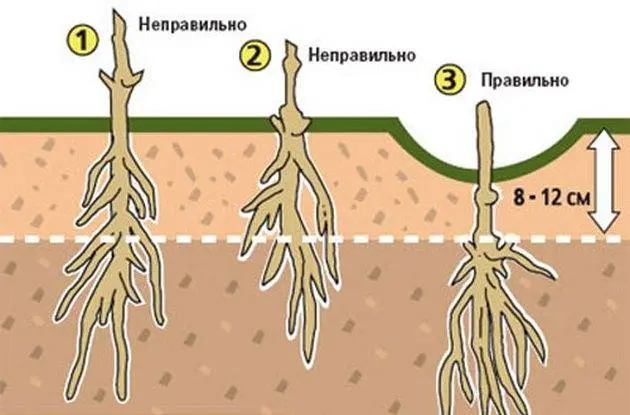Contents
Among many flower growers, especially beginners, there is still an opinion that such luxurious flowers as clematis can only grow in a warm and mild climate. But over the past decades, this idea has been completely refuted by many courageous gardeners and summer residents, and in many areas of Western and Eastern Siberia you can now find lushly flowering walls and arches of these attractive flowers. Clematis in Siberia, an overview of the most resistant varieties, planting and caring for these difficult plants are all topics in this article.
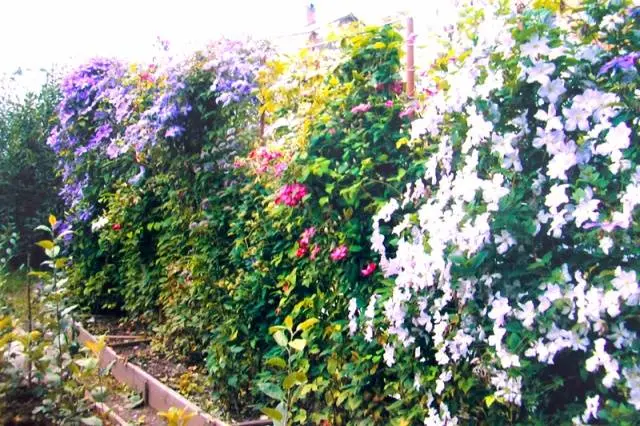
Variety of classifications
To date, about 300 natural species of clematis are known and several thousand varieties obtained in various ways over the past century. Such diversity could not but contribute to the emergence of various types of classifications, some of which are of interest primarily to botanists, while others are actively used by amateur gardeners.
The most modern international classification of clematis, adopted in 2001-2002, is based on the division of plants according to flower size. Thus, clematis can be divided into small-flowered and large-flowered. The group of large-flowered plants includes plants with a flower size from 8-10 to 22-29 cm. Small-flowered plants have a flower size from 1,5 to 12-18 cm.
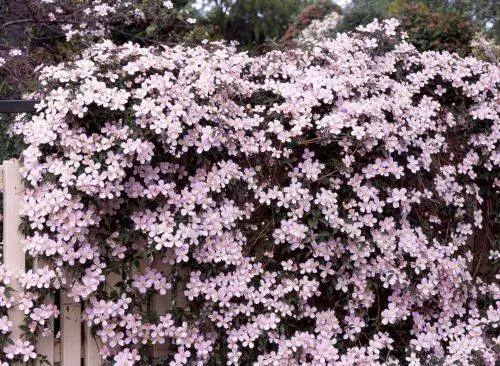
At the same time, both of them can easily live and develop in the harsh conditions of Siberia.
Why does it depend on whether it is possible to grow this or that variety of clematis in Siberia or not? For gardeners, the classification according to the method of pruning clematis turned out to be more in demand, which, in turn, is determined by the methods and time of flowering of a particular variety.
Trimming groups
Those clematis that are able to bloom profusely on the shoots of the current year, that is, emerging from the ground in early spring, are usually attributed to the third trim group. Since they need time to develop from zero to a flowering state, the flowering of these varieties usually occurs at a relatively late date – in July, August, September, and its duration and intensity already depend on the particular variety of clematis. Double flowers are found in this group, but quite rarely.
But their shoots are almost completely cut before winter, and only a small root zone is covered. Thus, plants can easily tolerate frosts down to -40°-45°С and are the most adapted varieties for growing in the harsh conditions of Siberia.
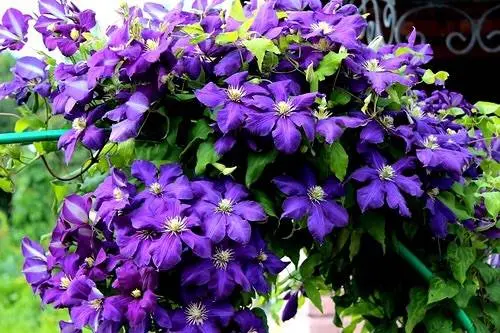
To the second trim group include varieties of clematis that bloom quite early (in May-June), often on the shoots of last year, but can also bloom on one-year growth, only at a later date. Naturally, it is impossible to cut such plants much in autumn – usually they are shortened only by a third – a quarter of the length of the shoots, folded into rings and special breathable shelters are built for them for the winter. In Siberia, this method of shelter may not be sufficient, so these varieties cannot be recommended for cultivation in areas with severe frosts. But often clematis with the most beautiful (including terry-shaped) flowers belong to this group. The way out was partly found in the fact that some varieties from this group are cut in the same way as group 3 clematis, and they still manage to please with their luxurious flowers only a few weeks later than usual. Practitioners gardeners often refer to these clematis as transitional 2-3 groups, although officially they belong to the second pruning group.
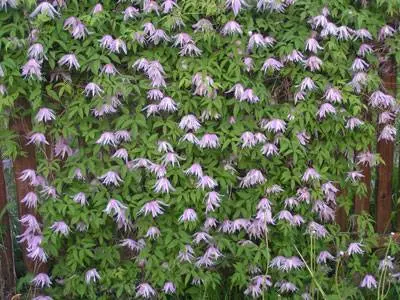
To the first trimming group include clematis, which bloom only on the last year’s shoots, and very rarely on new branches. These include mainly wild clematis species and some cultural groups. These clematis are practically not pruned before winter, and, accordingly, they do not cover. Most of these species and varieties of clematis are not suitable for growing in Siberia, but still there are several natural varieties that, according to experience, grow well and bloom even without shelter in the southern regions of Siberia – in the Irkutsk region, in Altai, in the south of the Krasnoyarsk Territory.
Among the variety of classifications of clematis for a gardener, it may be interesting to divide these plants into:
- shrub with short lashes, up to 1,5-2 m
- curly with a length of shoots from 3 to 5 m.
Varieties of the first variety are suitable for decorating small terraces and even for growing on balconies and in containers. With other varieties, you can twist a gazebo, and a wall of a house and an arch, up to two or three meters high.
Of course, it is interesting to grow clematis of different color shades and flower shapes on your site. All this information will be indicated in the description of the varieties that you can find below. The best, most reliable and sustainable clematis varieties for Siberia are presented in the next chapter.
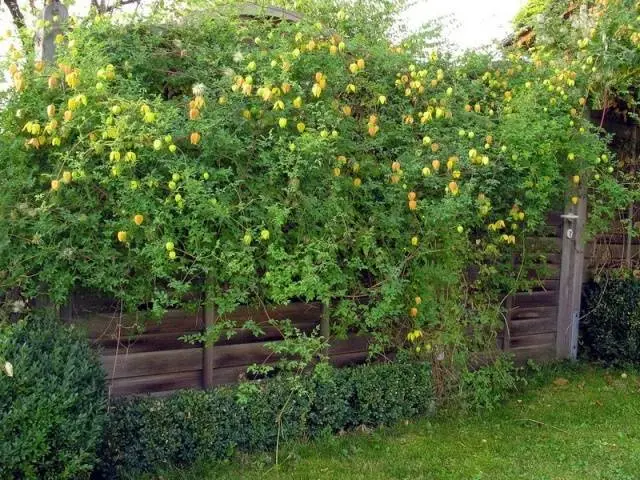
Descriptions of the most resistant varieties
Despite the abundance of foreign clematis varieties on the market, old varieties bred in the countries of the former USSR are still very popular among gardeners. Therefore, it is wiser to start a review of the best clematis for Siberia with them. In order not to repeat, descriptions of varieties belonging exclusively to the third pruning group will be presented first, and the remaining varieties will be described separately.
Domestic varieties
The most popular among flower growers are deservedly clematis with strong and powerful growth, with shoots reaching a length of 4-5 meters.
space melody
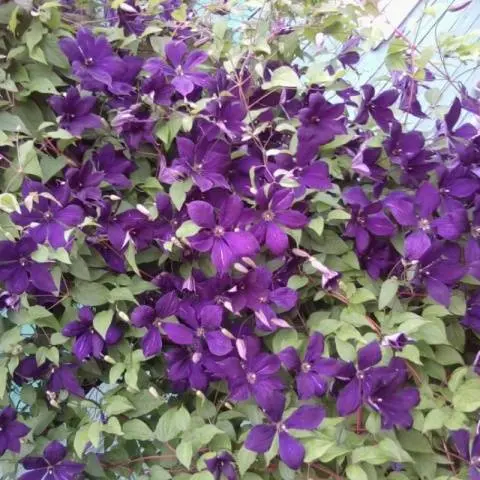
The variety was bred in the Crimea in 1965. Belongs to the Jacqueman group and blooms very profusely (up to 30 flowers on each shoot) almost all summer on the shoots of the current year. Powerful shoots with a total of 15 to 30 pieces in a bush reach a length of 4 meters. The diameter of the flowers is about 12 cm. The color is dark cherry, velvety, but the color of the flowers fades towards the end of flowering.
Luther Burbank

One of the most famous and popular varieties, known since 1962, is named after the first clematis breeder in America. Liana with strong growth reaches a height of 4-5 meters, and its wide open flowers are up to 20 cm in diameter. On the shoot there can be up to 12 purple-violet flowers with white-felt pubescence. In summer, in the heat, the color of the flowers may turn pale, but when the temperature drops, it becomes brighter again.
Blue flame

The variety is zoned throughout Our Country and has been known since 1961. About 10 shoots in a bush can reach each 4 m in length. Flowers with wide petals of a purple-blue hue, velvety, appear from July to November up to 15 pieces per shoot.
lilac star
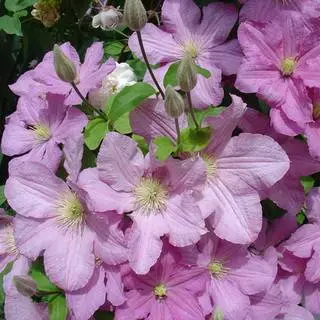
One of the earliest varieties of the 3rd pruning group – may bloom as early as June. The flowers are a light lilac-pink color and do not fade as they fade.
gray bird
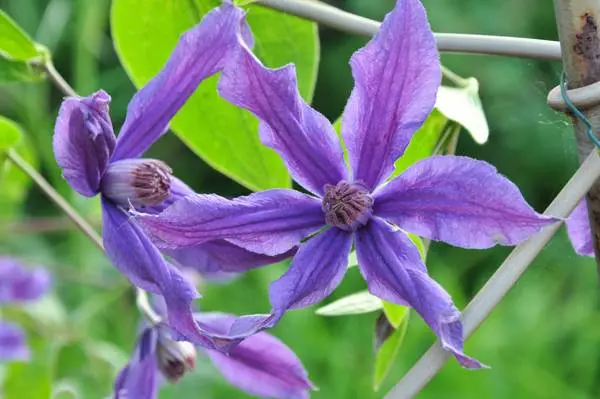
Shrub-type variety, weakly clinging, shoot length up to 2,5 meters. But in one bush up to 70 shoots can form. It blooms very profusely (up to 30 flowers with a diameter of 10-13 cm can form on one shoot) and for a long time. The flowers droop slightly down, the petals are dense, fleshy, deep blue in color. Easily propagated by cuttings. The variety is zoned in all regions of Our Country.
Nikolay Rubtsov
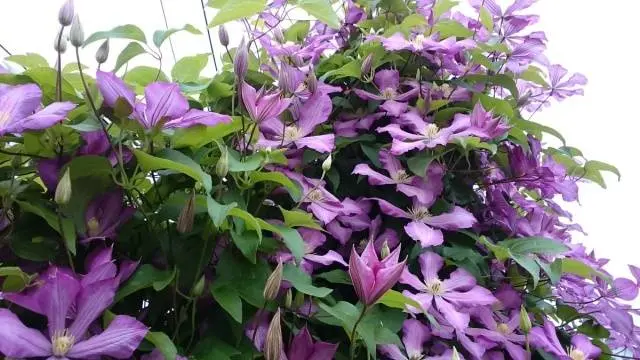
The variety, known since 1967, is named after the Soviet botanist N.I. Rubtsov. Forms a moderate number of shoots (up to 25 pieces per bush). On each shoot up to 10 reddish-lilac flowers of medium size (14 cm in diameter). The center of the flowers is lighter, the color turns pale in the sun.
Blooms moderately throughout the summer.
Anastasia Anisimova
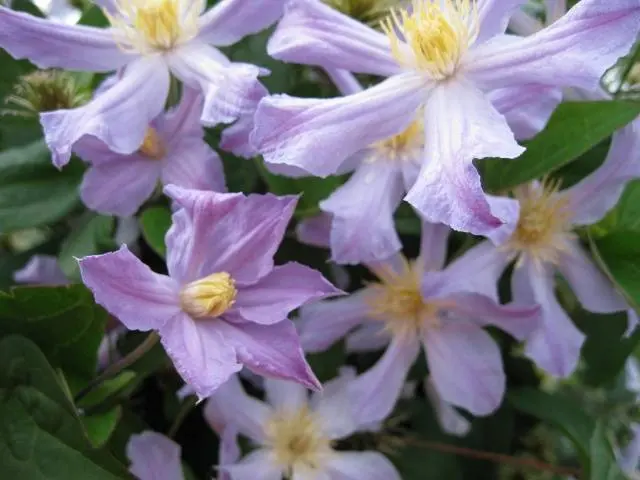
The variety, known since 1961, is named after an employee of the Nikitsky Botanical Garden, belongs to the Integrifolia group. Shrub weakly clinging, with shoots up to 2,5 m in length, of which up to 20 pieces are formed in one bush. Medium-sized flowers (12-14 cm) have a smoky blue color. The flowering itself is not too plentiful, but it is long-lasting – it can last from June until frost.
Texas
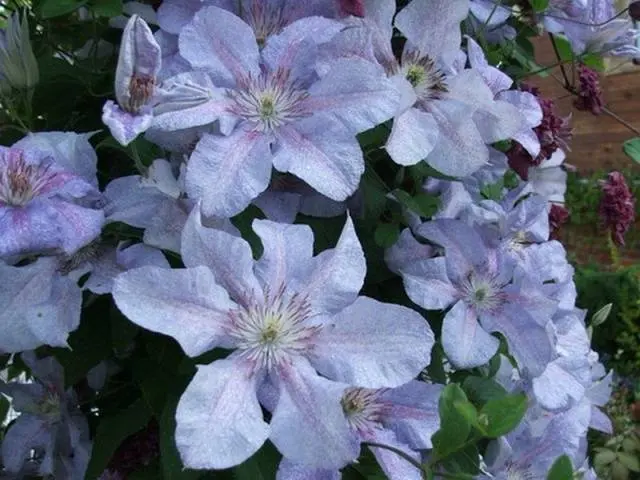
Liana with a small force of growth, reaches only 1,5-2 m in length. It is famous for its unusual color of flowers, where dark dots are scattered on a light lilac-blue background. Flowering lasts from mid-summer until the first frost.
Varieties of foreign origin
Large-flowered, but at the same time resistant clematis of foreign selection are distinguished by a special richness of colors.
Blue Angel
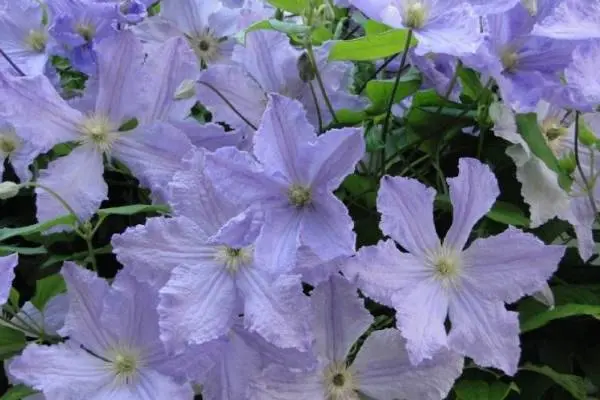
A variety with an average growth force, with a shoot length of up to 3 meters, originally from Poland. Light blue flowers with a wave along the edges of the petals are formed from July to late summer. Can be grown in containers and on balconies.
Hagley Hybrid
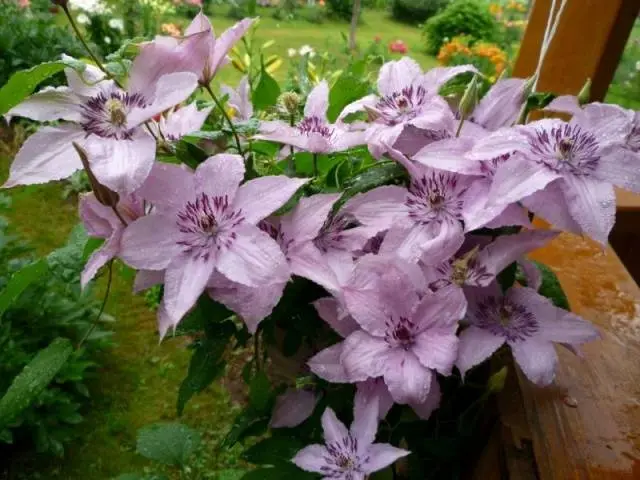
A popular variety of clematis with beautiful pinkish-lilac flowers that have a mother-of-pearl hue. It blooms throughout the summer, sometimes it can be affected by fungal diseases. Forms many shoots up to 2,5 m long.
A home ornament
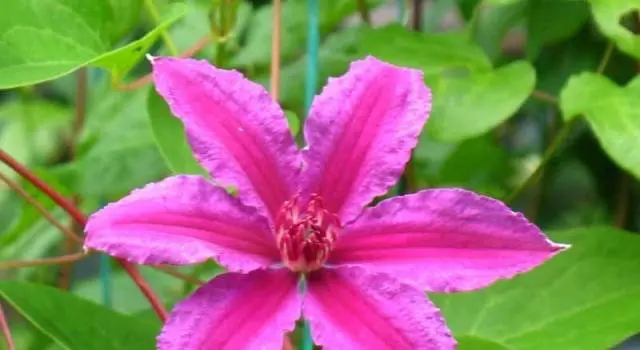
The name is translated from Estonian as home decoration. The purplish-purple petals have a red stripe down the middle. Clematis blooms profusely from July to October.
Lithuania
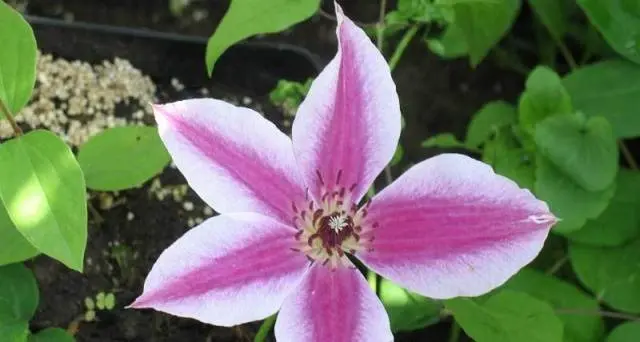
A 1987 variety from Lithuania is named after the aircraft. The shoots are small, reaching a length of only 1,2-1,5 m. The flowers of the original two-color color are 13-15 cm in diameter. Blooms in the second half of summer.
Niobe
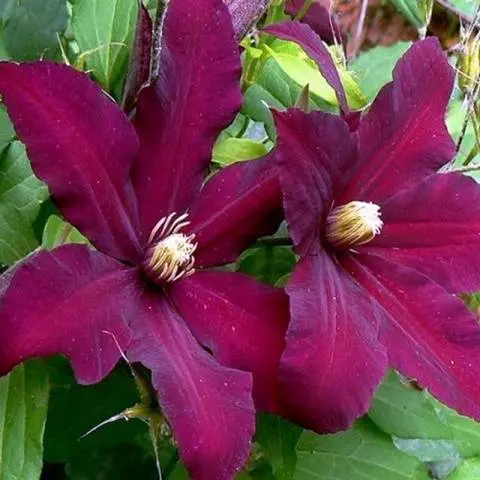
Variety 1975 originally from Poland. Flowers are quite large (up to 17 cm in diameter) are formed from July to September on rather long clinging shoots (up to 2,5 m long). One of the darkest colored varieties – dark purple flowers with a red stripe.
Gypsy Queen
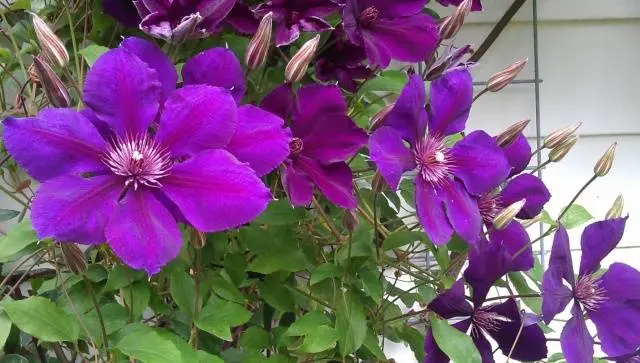
It is considered one of the best among the abundant flowering varieties. Purple flowers almost do not fade if planted clematis in partial shade. Up to 15 shoots up to 3,5 m long are formed in the bush.
Rouge Cardinal
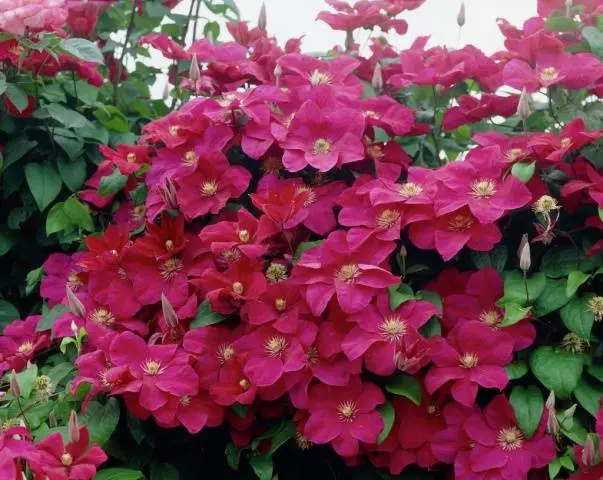
One of the most popular and most resistant varieties of clematis. The flowers have a velvety red-purple hue.
Ville to Lyon
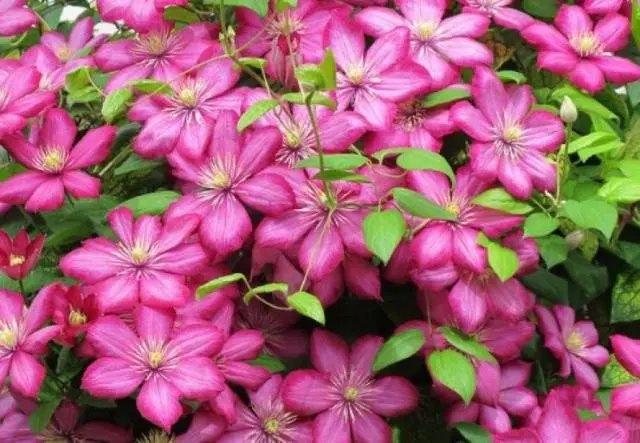
One of the most beautiful varieties of foreign clematis, which is incredibly popular. It is also one of the oldest varieties – known since 1899. The bush forms up to 15 shoots up to 3,5 meters long. Large flowers (up to 15 cm) of a lilac-reddish hue have darker edges, but fade over time. It blooms very profusely throughout the summer, but in adverse conditions of high humidity it can be affected by verticillium wilt. Although, on average, the variety is very stable and winters well in Siberia.
Victoria
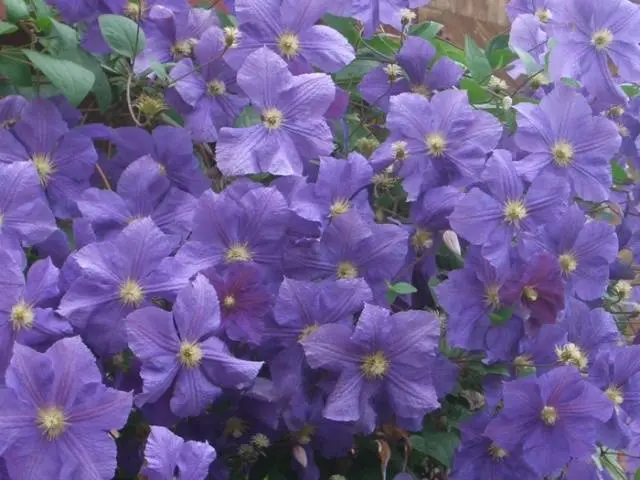
A wonderful popular variety of clematis known since 1870. It is characterized by great strength of growth, shoots grow up to 4 meters and up to 20 pieces are formed in each bush. Flowers with wide purple-lilac petals are directed to the sides and down. They have a tendency to burn out. Blooms profusely in late summer – early autumn.
Purplea Captive Elegance
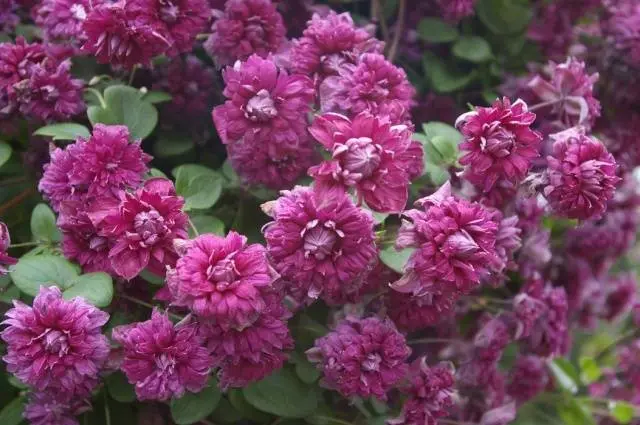
According to the modern classification, this clematis belongs to small-flowered varieties (they reach 5-9 cm in diameter), but this does not detract from its merits. Not only does it have no equal in terms of the abundance of flowering (up to 100 flowers can form on one shoot per season), it belongs to the 3rd pruning group. And the flowers – terry, red-purple, blooming gradually, will fascinate any gardener. Blooms throughout the summer and into September. Up to 10 shoots 3-4 meters long are formed in the bush.
It should be noted that among small-flowered clematis there are also many worthy varieties that can be grown in Siberia. Although they form very small flowers (3-8 cm in diameter), they can conquer anyone with the abundance and duration of flowering.
You can note such varieties as:
- Alyonushka (purple-pink)
- Riddle (blue-purple with white center)
- Blue rain (blue)
- Satellite (gray-blue)
- Khuldin (white)
- Carmencita (red-purple)
- Cloud (dark purple)
All of these varieties can be completely pruned before winter and will bloom on the current year’s shoots.
Varieties of transitional 2-3 pruning groups
Among these clematis there are both varieties of domestic and foreign origin.
Ernst Makham
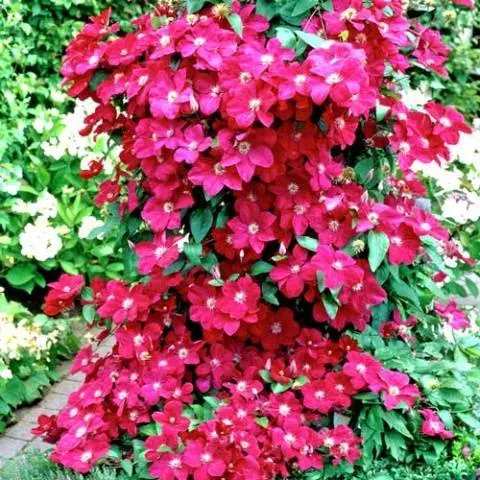
A very popular and persistent variety with crimson-red flowers 12-14 cm in diameter. Blooms from July until frost.
Ball of flowers
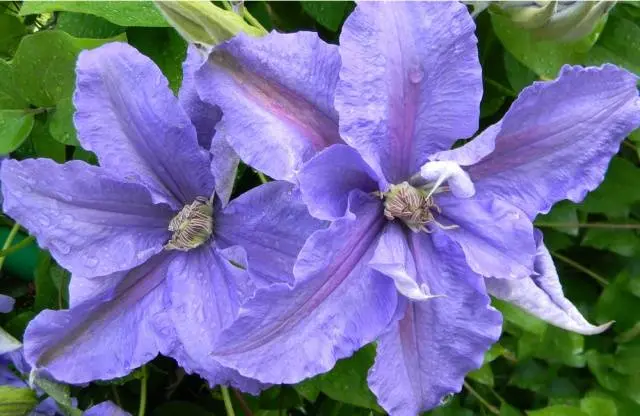
Large flowers of this variety (up to 20 cm in diameter) cover the shoots so abundantly during flowering that it helped to determine the name of the variety. Moreover, flowering begins in May-June on last year’s shoots and ends by autumn on the shoots of this year. The flowers are bluish-lilac with a purple stripe. Variety of domestic origin, known since 1972.
John Paul II
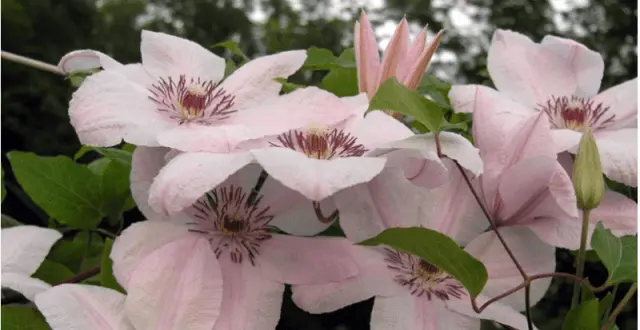
A variety of clematis originally from Poland, 1980, named after the Pope, who died in modern times. The color of the flowers is creamy white with a bright pink stripe in the middle. As the flower lives, the stripe brightens and merges with the background of the petals.
Blue Light
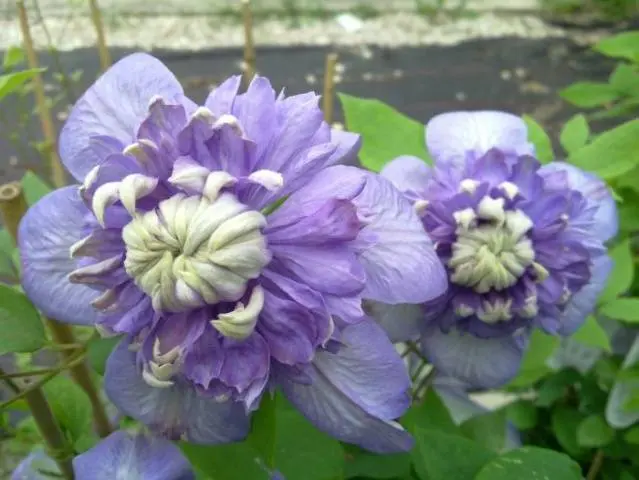
The clematis variety of Dutch origin has densely double flowers, both on the shoots of the past and current seasons. Many other double varieties of clematis form double flowers only on last year’s shoots. The petals are a light lavender blue. Flowers of this variety prefer an exceptionally sunny location.
Multiblu
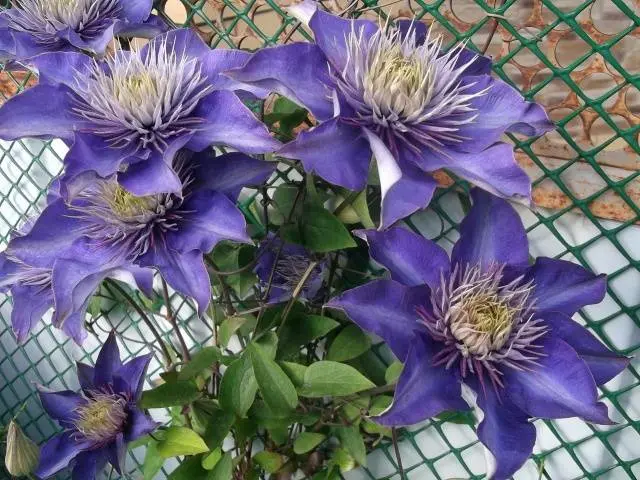
Another terry variety from Holland. Double flowers of an average purple-blue color can change their color scheme depending on growing conditions.
natural varieties
Finally, there are several natural varieties of clematis that can be grown in Siberia.
Tangut
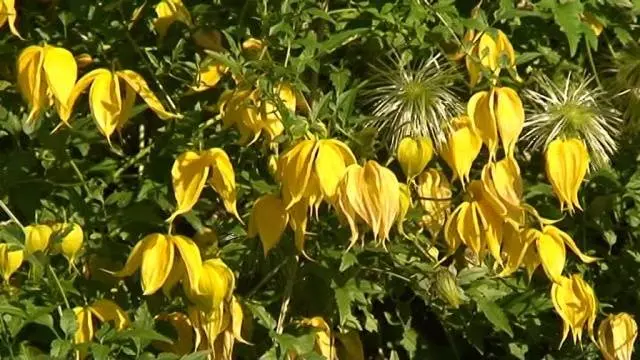
It is one of the most decorative types of clematis from the wild. In culture, the species has been known since 1890. It can grow both as a shrub up to half a meter high, and as a vine, up to 3-4 meters long. It blooms on the shoots of the current year, and up to 120 flowers can form on one shoot. The flowers are yellow, directed downwards in the form of lanterns, small in size (up to 4 cm). Flowering continues from June until the first frost, sometimes in waves. Ripening fruits of silvery color give additional decorative effect to plants. Propagated well by both seeds and cuttings.
Straight (C. recta)
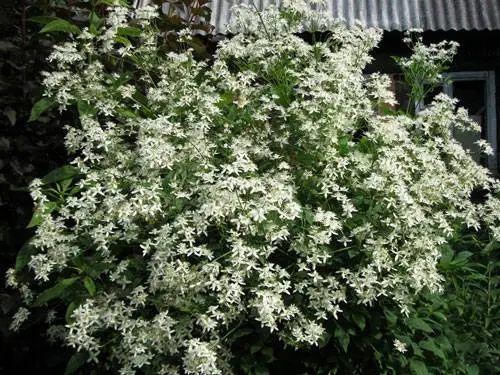
This clematis looks like a rather erect shrub, individual shoots of which reach a length of 1-1,5 meters. Small white flowers look up and bloom in large numbers in June – July. Dying shoots before the onset of the earth are cut off at soil level.
Planting and care
In principle, planting and caring for clematis in Siberia is not much different from similar actions in other regions. As you understand, the determining factor is pruning and sheltering the root zone of clematis for the winter. But it is necessary to understand that clematis are most afraid of not even frost, but getting wet during the spring rains. Therefore, the most basic principles of planting and care should be taken into account so that these plants will delight you for many years. Indeed, every year, with proper care, the planted clematis bush grows and becomes not only more beautiful, but also more stable.
- Choose a sunny or semi-shaded planting site (depending on the requirements of a particular variety), but with mandatory wind protection and low water tables. When planting clematis near the walls of buildings, it is necessary to retreat 50 cm and prevent water from entering the bushes from the roof.
- In heavy, clayey, acidic, or poorly drained soils, a hole should be dug at least 60 cm deep and in diameter. Then fill it with a mixture of 50% compost, humus, 35% garden soil, 15% sand and a little lime and wood ash to prevent stagnant water and facilitate the flow of air and nutrients to the roots. It is good to add about 200 grams of ready-made complex fertilizer, such as Kemira, to the soil mixture.
- It is best to make sure that the clematis planting site rises above the surrounding space by at least 5-10-15 cm. In this case, all heavy rainfall will be washed off and not stagnate in the root zone.
- Even before planting clematis, build reliable supports for them, but so that their thickness is no more than 2 cm, otherwise it will be difficult for plants to cling to them.
- Planting clematis in a permanent place, both in Siberia and in other regions, is best done in the spring, when a stable average daily positive temperature is established.

- When planting, a seedling can be deepened by no more than 7-12 cm than it grew before. It is better to mulch the soil abundantly after planting with some organic material (sawdust, straw, compost).
- Clematis need regular and abundant watering – at least 1 time per week and intensive feeding. The latter are carried out with the help of organic or mineral fertilizers at least 3-4 times per season.
Before the onset of persistent frosts, all shoots (or most of them, if you want to experiment) are cut at a level of 15-20 cm above ground level (3-4 lower buds should remain) and spud with humus to the same height. Then they are covered with spruce branches or oak leaves, and on top they are also covered with lutrasil, which is attached to the ground.
The video below illustrates well the main points of planting and caring for clematis in Siberia, and also shows some of the most popular varieties:
Reproduction
Many clematis are successfully propagated by dividing the bush, cuttings and layering. The latter method is the easiest and allows you to get the largest number of seedlings with a minimum of effort. To do this, it is only necessary to dig in the spring the growing shoot in several places to the ground and over the summer it, receiving nutrients from the mother bush, will take root safely.
Natural types of clematis are quite easily propagated by seeds. Planting clematis from seeds requires preliminary seed stratification at a temperature of +15°+16°C for 3 months. Germination can last from two weeks to two months. Seedlings are planted in a permanent place only when they are at least two years old.
It is not difficult to grow magnificent clematis in Siberia if you choose the right varieties and provide them with proper planting and decent care.










